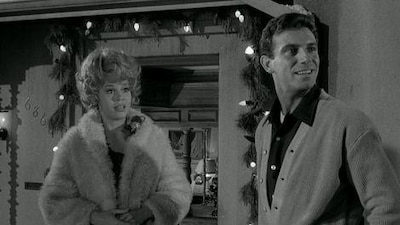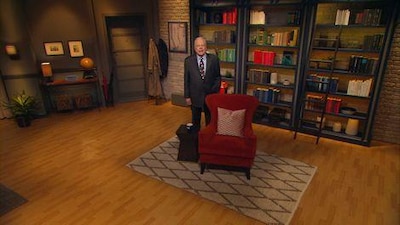Period of Adjustment

Brief Synopsis
Cast & Crew
George Roy Hill
Tony Franciosa
Jane Fonda
Jim Hutton
Lois Nettleton
John Mcgiver
Film Details
Technical Specs

Synopsis
Shortly after his discharge from the hospital where he has been treated for the shakes, Korean War veteran George Haverstick marries Isabel, his nurse, a good-natured, romantic Southern belle. Their honeymoon gets off to a bad start when Isabel discovers that George has quit his job, that his "station wagon" is actually a hearse, and that their wedding night is to be spent in a cheap motel. Despite his conspicuous display of masculinity, George feels inadequate, and to avoid failure on his wedding night he gets drunk and passes out in a chair. The next morning, he takes his disenchanted bride to Tennessee to visit a wartime buddy, Ralph Baitz, who married for money but now genuinely loves his wife, Dorothea. Because of trouble with his domineering in-laws, the McGills, Ralph has decided to quit the family business, and Dorothea has left him, convinced by her parents that she, too, will be abandoned. When Ralph's in-laws arrive to claim their daughter's possessions, a fight ensues, and everyone ends up at the police station. George and Isabel, forgetting their own problems, commiserate with Ralph and Dorothea. With their help and Ralph's gift of a fur coat to convince Dorothea that he isn't after her money, the Baitzes become reconciled. George confesses his nervous anxiety, and Isabel lovingly reminds him that the best thing about marriage is that there is so much time to work out problems.

Director

George Roy Hill
Cast

Tony Franciosa

Jane Fonda

Jim Hutton

Lois Nettleton

John Mcgiver

Mabel Albertson

Jack Albertson
Crew
George W. Davis
Henry Grace
Sydney Guilaroff
Al Jennings
Isobel Lennart
Franklin Milton
Lyn Murray
Dick Pefferle
Fredric Steinkamp
William Tuttle
Paul C. Vogel
Lawrence Weingarten
Lawrence Weingarten

Photo Collections
Videos
Movie Clip




Trailer
Hosted Intro




Film Details
Technical Specs

Award Nominations
Best Art Direction
Articles
TCM Remembers George Roy Hill, 1922-2002
Born on December 20, 1922, to a well-to-do Minneapolis newspaper family, Hill would hang out at the local airfield as a child and watch the barnstorming pilots, fascinated by their theatrics. His intense interest would eventually drive him to earn his pilot's license by age 16. But his love for the performing arts was inspired by a different calling - the stage, where he appeared in student productions at his prep school in Hopkins, Minnesota. After graduating, he majored in music at Yale. A baritone, he became a member of the university Glee Club but he soon discovered that singing wasn't his forte. He found acting more suitable and joined the Dramatic Society, becoming its president and appearing in campus musicals. Ten days after graduating with a bachelor's degree in music in 1943, Hill joined the Navy. After flight school, he transferred to the Marines and piloted transport planes in the South Pacific during World War II.
Following the war, he worked briefly as a cub reporter on a family newspaper in Texas, then used the GI Bill to attend Trinity College in Dublin, Ireland, where he earned a bachelor's degree in literature in 1949 and did a stint with the Abbey theatre. Back in the United States, he received good reviews in an off-Broadway play, Strindberg's The Creditors with Beatrice Arthur, and toured with Margaret Webster's Shakespearean company - a celebrated theatrical company for its time. The Korean War interrupted his career, when Hill was recalled to Marine duty, serving 18 months at a training center in North Carolina, and later emerging as a major. The time spent away from the theater was beneficial to Hill, and he decided to move away from acting toward writing. His scripts soon found their way to television and Hill quickly rose from assistant director to director on several of the most acclaimed live dramas of the '50s including The Helen Morgan Story, the original TV production of Judgment at Nuremberg. He also earned two Emmy Awards for writing and directing a Titanic story, A Night to Remember.
In 1957, Hill moved to Broadway, where he directed the Pulitzer Prize-winning Look Homeward, Angel. After directing Tennessee Williams' Period of Adjustment, Hill kicked off his film career by directing the 1962 film version, which gave Jane Fonda her first major role. He followed that up with the film adaptation of Lillian Hellman's classic play, Toys in the Attic (1963), but it would be his third film that would earn Hill critical acclaim, the marvelous Peter Sellers' comedy The World of Henry Orient (1964). The story concerning two teenage girls who stalk a concert pianist (Sellers) around New York City, established Hill's brisk style and his flair for bittersweet comedy. His next two films, both starring Julie Andrews, were James Michener's epic Hawaii (1966), and the big-budget musical Thoroughly Modern Millie (1967). Although his craftsmanship was always impeccable, both films failed to elevate him to the front ranks of Hollywood directors.
That all changed with Butch Cassidy and the Sundance Kid. Few associated with the film could have predicted that this light-hearted western would be the box-office smash it became when it was released, but audiences fell in love with this charming and innovative film. Instead of playing Butch (Newman) and Sundance (Redford) as vicious outlaws, Hill and screenwriter William Goldman made them easy-going, sympathetic drifters for whom robbing banks was just a game. As the director, Hill kept the balance between the film's comedy and drama pitch perfect, emphasizing the straightforward storytelling which was free from any heavy-handed editorializing. Also, by giving the characters a modern feel with contemporary dialogue and using an upbeat, pop-oriented Burt Bacharach score, Hill breathed fresh life into the Western genre. The film deservedly received Oscar nominations for Best Picture and Best Director; and earned Oscars for Conrad Hall's cinematography, Burt Bacharach's original score, the Bacharach/Hal David composition "Raindrops Keep Falling on My Head", as well as Goldman's original screenplay.
Newman and Redford would be reunited again with Hill for his next big hit The Sting, as con men who ensnare a brutal gangster (Robert Shaw) in an intricate scheme. A highly stylized piece of work, Hill crafted the film in the style of the old Saturday Evening Post graphics, complete with chapter headings; imitated the flat camera style that was employed for those classic Warner Bros. gangster movies and resurrected the ragtime piano of Scott Joplin for the score (as interpreted by Marvin Hamlisch). For his exceptional work, Hill won the Academy Award for Best Director and the film also bagged Oscars for Best Picture, Best Original Screenplay (David S. Ward), Best Score (Hamlisch), Best Editing (William Reynolds), Best Costume Design (Edith Head) and Best Art Direction (Henry Bumstead and James Payne).
Hill would work with Redford and Newman again, albeit individually, later in the decade. The Great Waldo Pepper (1975), the story of a barnstorming pilot, was culled from some evocative childhood memories, yet despite the star power of Redford, it was not a success. Nor was the Paul Newman vehicle Slap Shot (1977), a raucous look at the lives of minor league ice hockey players. The off-color language and bawdy locker-room antics perplexed audiences and critics at the time, although it's now considered to be one of the best (and funniest) of all sports films.
Although he would never again scale the critical and commercial success of Butch Cassidy and the Sundance Kid or The Sting, Hill would enjoy later acclaim with the sweet natured A Little Romance (1979), starring Laurence Olivier and a 13-year-old Diane Lane; his ambitious adaptation of John Irving's episodic The World According to Garp (1982); and his final film, the slight, but pleasant Chevy Chase comedy Funny Farm (1988). Soon after that, Hill retired from Hollywood to teach at his old Alma Mater Yale. Hill is survived by his former wife, Louisa Horton, as well as two sons, George Roy Hill III of Roslyn, N.Y., and John Andrew Steele Hill of Ardsley, N.Y; two daughters, Frances Breckinridge Phipps of Dumont, N.J., and Owens Hill of Los Angeles; and 12 grandchildren.
by Michael T. Toole

TCM Remembers George Roy Hill, 1922-2002
Quotes
Trivia
Miscellaneous Notes
Released in United States on Video July 6, 1994
Released in United States Winter January 1, 1962
Ffeature directorial debut for George Roy Hill.
Released in United States Winter January 1, 1962
Released in United States on Video July 6, 1994














